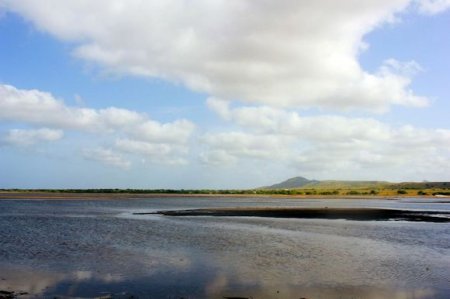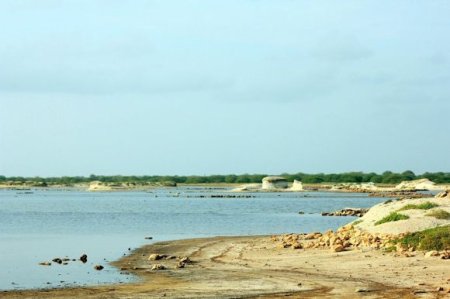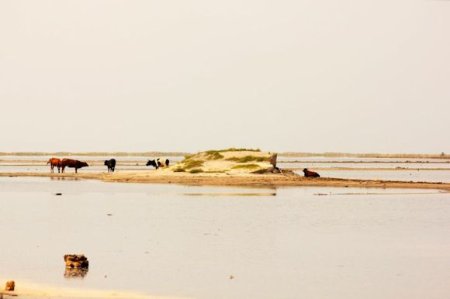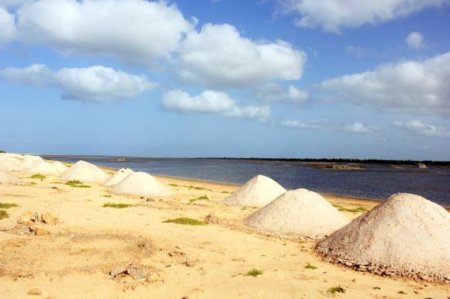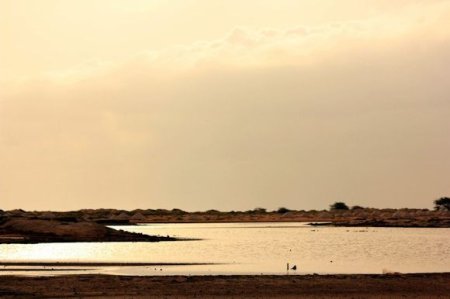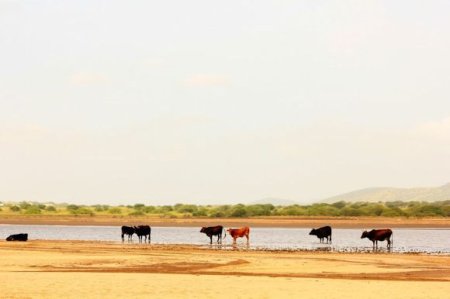Cape Verde designates salt flats for Ramsar List
The Directorate General of Environment in Cape Verde has named Salinas of the English Port (Salinas de Porto Inglês) (535 hectares, 15°09’16”N 023°13’33”W) near Porto Inglês, or Vila do Maio, on Maio island as its newest Wetland of International Importance, bringing that country’s total number of Ramsar Sites to 4, though the total area covered is not yet known. As described by Ramsar’s Charlotte Eyong, based on the accompanying RIS, the site consists of extensive salt flats with a lagoon basin, sand dunes, rocky semi-desert areas and wooded areas (principally acacia trees). It hosts an important number of characteristic sand dune and semi-desert species, including the Greater Hoopoe-Lark Alaemon alaudipes, Black Crowned Sparrow-Lark Eremopterix nigriceps, Bar-tailed Desert Lark Ammomanes cinturus, and wetland species such as the Sanderling Calidris alba and the Bar-tailed Godwit Limosa lapponica, all very important in maintaining the biological diversity of the Macaronesia ecoregion.
The site also supports 10 to 13% of the global population of the Cream-coloured Courser Cursorius cursor as well as the endangered Loggerhead turtle Caretta caretta, and the largest population of the Cape Verdean Kentish Plover in the Atlantic Ocean, 150-300 individuals, representing 50% of the Cape Verdean population.
Current land use includes salt extraction, livestock grazing and small-scale recreation and tourism. Tourism is gradually developing with the on-going construction of the Salinas beach resort. There is a need for regulatory actions to prevent over-construction of touristic structures in the Ramsar Site.
Photos by Aquiles Oliveira
